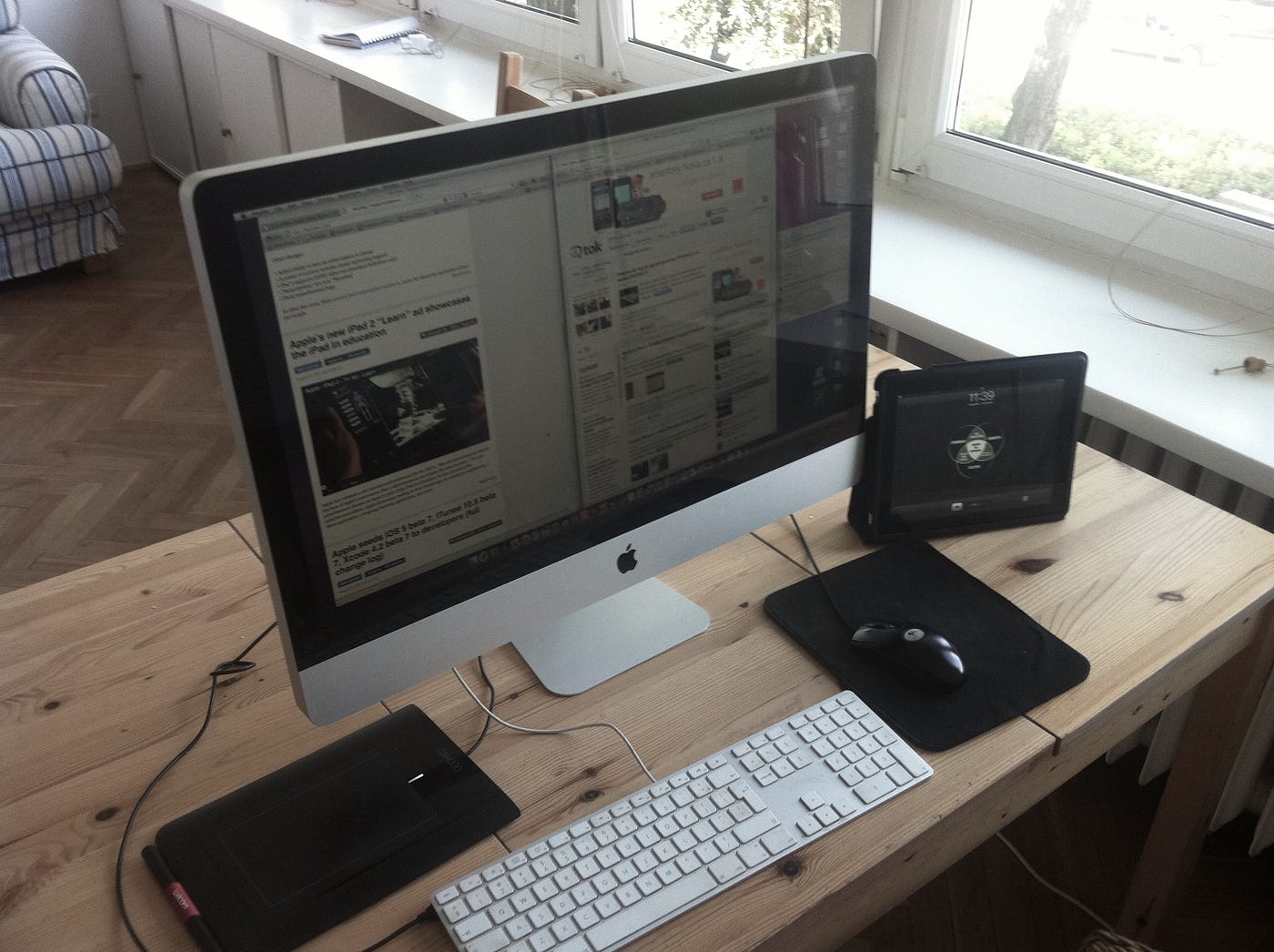Ipad Pro Apps For Ux Design
Apple Event
Are iPads the future of product design?
Apple turns its cheaper tablets into a powerful design tool. Will it convince the industry to start using it more?
![]()
I used to work on an ugly, beige box. Every morning I pulled my swivel chair from under the desk, crawled into the hole underneath and pushed the oval, cyan button that said "POWER".
After a series of whirrs, clicks and pops, Windows 95 (then 98, then XP) loaded and I could launch Photoshop or Flash and begin work.
Luckily turning it off was a tiny bit more convenient, as it only required a few clicks in the Windows UI.
Evolution of design workspaces
Before that clunky P C era, many of the great industrial designs happened on paper, using specialised drawing tools, special desks and so on. But that was before my time, so let me share that evolution (and where I think it's headed) starting where I started.
Like all the tech giants, my freelance web design career started in my parent's basement, right next to the garage. But to be fair, I have to say that it was mainly because there was a second phone line there, so I could use my 33.6kbit modem and connect to the internet.
I spent days there learning HTML and putting together simple websites. My design process?
Think about something cool and then make it.
The displays
When I started working on Web Design in late 1998, I had a beast of a display that could show 256 colors at a mind-blowing resolution of 640x480 pixels.

If you look at it from today's perspective, that's about 1/6th of an iPhone resolution in a big box weighing in at up to 20 pounds. Imagine a whole website from the late 90's having the resolution of an iOS 14 weather widget.
It's mindblowing.
The form factors
My boxy desktop PC was nowhere near portable. That didn't stop me from disconnecting it every Saturday and carrying each part to my friend who lived next door. We then used a printer cable to create a local area network and play QuakeWorld.
The entire setup could take at least an hour before we even started playing, including handing him over the computer and the monitor through the window, as it was a shorter route than going all around the house.

Hello, laptop
My first "portable" computer was an Acer Laptop in 2005. It had a 1024x768 display, was about 5 inches thick and super heavy. The battery allowed me to do work "on the go" for as long as 45 minutes before it died.
While it may sound funny nowadays, it was a revolution. I even took it with me on my summer trip to Northern Ireland, where I worked nights at a bar, and used the days to try to redesign some websites of local businesses.
This wouldn't have been possible with the beige box.

But laptops are still computers.
Sure, we can take them to a café and work on that new Sketch design while drinking a decaf Americano and eating a gluten-free pumpkin muffin, the way of interacting with it hasn't really changed that much.
It's still a display on top of a keyboard and we still use a mouse cursor to draw our rectangles. It still felt "similar" in terms of how we work and how the results of that work come to life.

Enter, iPad.
When the first iPad came out back in 2010, I bought it right away. Mainly because we were making an iPhone game at the time, and wanted to also make it work on a big screen. I tried taking notes on the on-screen keyboard, jotting down ideas and all, but in the end the device ended up running a single app — Flipboard.

It was still a media consumption device before anything else.
Draw or Type
I think the first big revolution really came with the iPad Pro. The keyboard on it was actually more responsive and easier to type on than my 15" Touchbar MBP from 2016. And because of that laptop's bad keyboard, I actually moved most of my note-taking and writing to the iPad.
The device was still a lot smaller and lighter, but I had a keyboard whenever I wanted, or just a tablet with an on-screen keyboard just to change my working style. It also allowed for different positions while working which was beneficial to my back.
Then the Pencil came along, and while a horrible design concept at first (that charging idea wasn't even funny), it quickly grew into an actually useful tool.
Workflows today
Currently many of us work remotely. And some of us use that opportunity to actually get out of the house, rent a cabin somewhere, or even go on a biking trip and work from camping sites. My designer friend Silvia often posts examples of how she user her iPad to do actual, real work, with a beautiful mountain lake view in the background.
The lighter yet powerful the device gets, the easier it becomes.

And while Sketch is not yet on an iPad, there is plenty of work that I can accomplish on this device. Sketching up flow diagrams in ProCreate, editing videos in LumaFusion or writing this very article in IA Writer.
I even wrote large parts of our book on my iPad, as having a single-window app actually improves focus. You tend to really work on the task at hand with the current way iPads do multitasking.
I realised that I am using my iPad Pro (11") more and more every year to do actual work, and less to just "browse the internet".

Workflows in the future
One of the biggest innovations that could benefit design, is everything that's happening around Apple Pencil. It's already super precise, but text recognition and shape drawing is making it a real alternative to pen and paper.
I asked around and many designers already do flow diagrams on their iPads, and sometimes sketch out the general navigation ideas or simple wireframes on it too.
I don't think they'll completely replace our computers, but they do give us the ability to SWITCH the way we work. From the typical "sitting at a computer" to "holding a computer in your hand and drawing on it".
And somehow that act of using the Pencil is making the whole work experience feel a lot different and more fulfilling afterwards. When these sessions are over I feel as if I had finally done some real work.
iPad Air 2020
Which leads me to today's Apple event. I think the new, cheaper yet still just as powerful iPad Air will allow more designers to buy it and use it as their secondary, but increasingly more used tool.
Now it's only a matter of figuring out how else can we use it to make our work both better quality, and also faster, while staying sane in these troubling times.
And with more pro apps appearing on the iPad (like Adobe Illustrator) our future screens can start to be more horizontal than vertical oriented. Now hopefully Sketch, Figma and others will also take cue from this.
Maybe working remotely with a nice view can help with that!
Do you use iPads in your current workflows? How?
Ipad Pro Apps For Ux Design
Source: https://uxdesign.cc/are-ipads-the-future-of-product-design-f4d6f992e87e
Posted by: hutchesonmationdeed.blogspot.com

0 Response to "Ipad Pro Apps For Ux Design"
Post a Comment